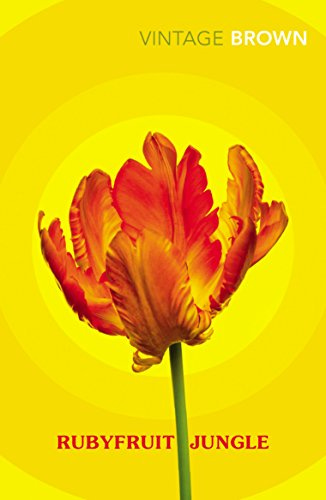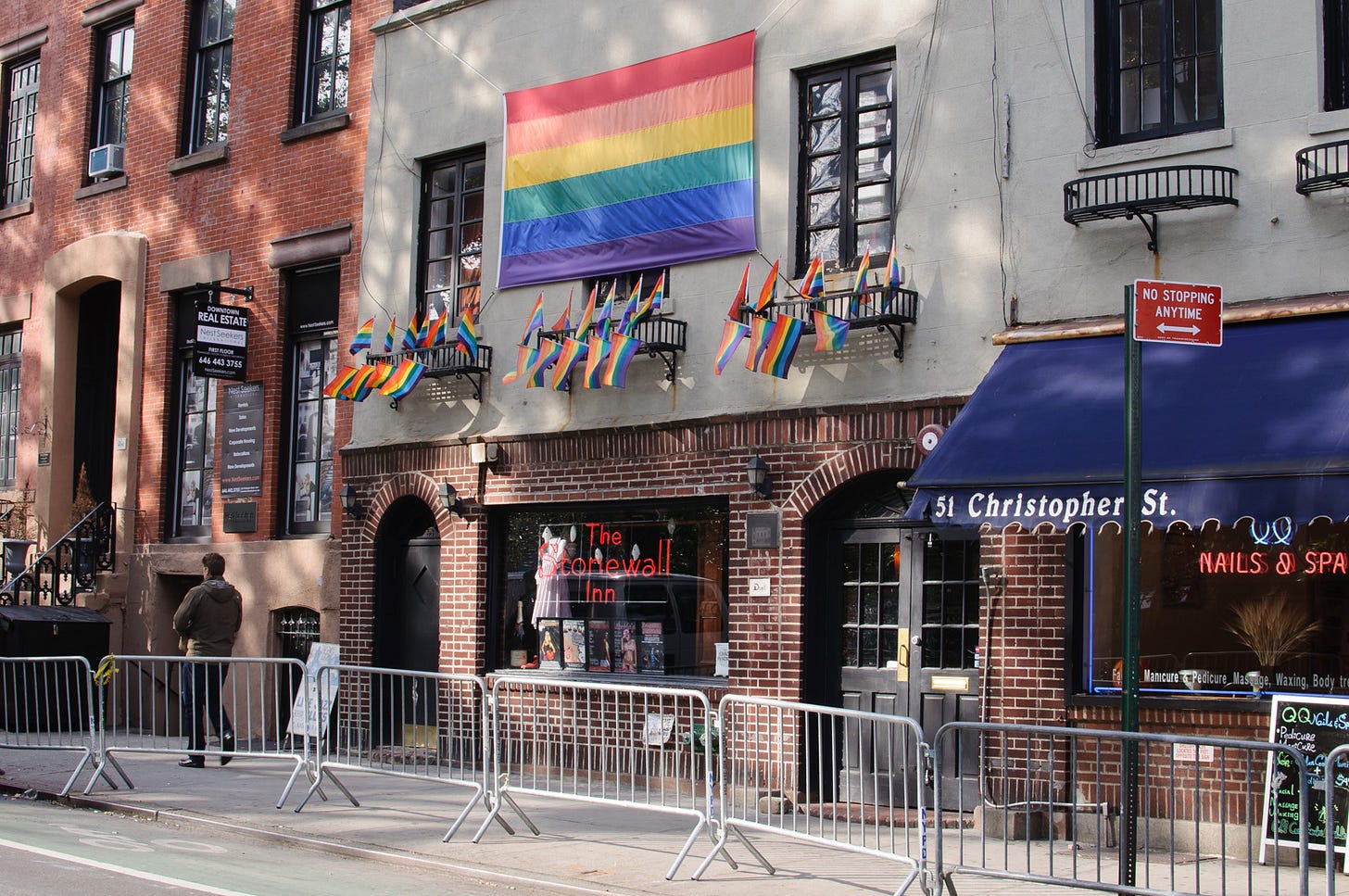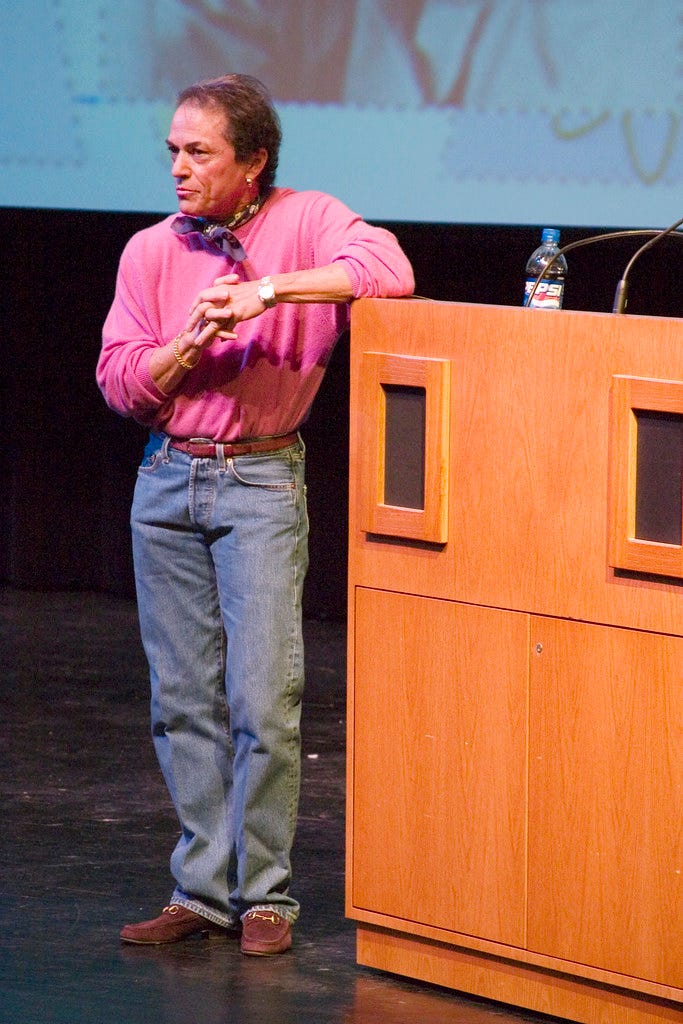'Rubyfruit Jungle'
Celebrating Pride with a look back at Rita Mae Brown's coming-of-age classic
Welcome to A Narrative of their Own, an essay newsletter discussing the lives and literature of women.*
(*Just in case it isn’t clear: “women” includes ALL female identifying people).
As the month of June is Pride month, I usually like to share an essay on something Pride related. This year, I’ve also decided to do something a little bit different.
We always celebrate Pride with a very special person at home, and it’s a lovely occasion. However, I know that this isn’t the experience for all young people within the LGBTQ+ community.
So this year, I wanted to re-share an essay I wrote a couple of Pride’s ago, and put forward a special offer: for anyone signing up to a yearly paid subscription, for the next seven days, I will donate the entire proceeds to The Proud Trust.
This organisation does so much to help LGBTQ+ youth access resources, attend community groups, and explore their identity in a confidential and safe space. It also offers training to schools and provides resources for parents and allies.

As an extra bonus, I am putting a reduction of 20% onto the yearly subscription price for anyone wanting to participate. If you have been considering supporting my work, now is a good time to take advantage of this special offer, as well as contribute to a good cause.
Now, over to Rita Mae Brown…
Rubyfruit Jungle, Rita Mae Brown’s coming-of-age, semi-autobiographical lesbian novel, was written in 1973 and hailed as a lesbian bildungsroman. Considered a classic for a generation of lesbian women, it has been referred to as a lesbian version of Catcher in the Rye, and features a thinly-veiled version of Brown’s own journey from childhood “tomboy” to 1970’s feminist, living and working in New York City, under the guise of Molly Bolt.
Molly Bolt grows up amongst homophobia and misogyny in Northern Florida, where she determines to be true to herself and her own choices. What is refreshing in the novel is her self-belief and celebration of who she really is. Bolt (like Brown herself) is a brave, feminist woman who takes no prisoners amongst the characters who people her life, and it has been noted that her attitude and this novel in particular presented women with an alternative to the public rhetoric of women’s lives following second-wave feminism.
Brown was an out-and-proud lesbian woman at a time when the word had only recently become more known in the public consciousness. Known for her charming and handsome features, Brown moved to New York from her hometown of Gainesville at the time of the Stonewell riots and joined both the Gay Liberation Front and the National Organisation for Women. She was disappointed in both these groups and their lack of support for gay women, however, and pointedly said so.
In 1970 and at the age of 26, the recently graduated Brown was summarily removed from her editorial role at the NOW newsletter created by Betty Friedan, author of The Feminine Mystique. Friedan felt that lesbians within the feminist cause were a ‘distraction’ from the central issue of women’s politics, calling them the ‘lavender menace’ of the movement. Brown resigned from the movement but not before issuing a vitriolic letter attacking the leadership for their oppression of women on the question of sexual preference.
But Brown did not leave her dismay there.
The same year, at the Second Congress to Unite Women in New York City, after NOW refused to feature any openly gay women or discuss any topics pertaining to them, Brown formed a splinter group, the Radicalesbians, and staged an intervention, infiltrating the audience of straight women, wearing purple t-shirts declaring themselves ‘the lavender menace in the flesh’, amongst other slogans.
The group presented a manifesto to the gaping audience entitled ‘The Woman-Identified Woman’ containing the opening line:
‘A lesbian is the rage of all women condensed to the point of explosion’.
The manifesto demanded sexual freedom be included as part of an all-encompassing feminist movement and suggested that women see how heterosexuality was held as an ideal by the male supremacy against which feminism was working to change.
‘By virtue of having been brought up in a male society, we have internalised the male culture’s definition of ourselves…that definition consigns us to sexual and family functions, and excludes us from defining and shaping the terms of our lives.’
The intervention was successful: queer related subjects were included within the next conference.
Brown left New York for Washington, DC, where she co-founded lesbian-feminist commune The Furies, contributing to their newspaper and publishing ‘A Manifesto for the Feminist Artist’ in 1972.
‘90% of what is available to the public remains the art of the oppressor…precious little of our work leaks out to the mass public…[O]ur art must be more than personal narrative…’
This was likely spurred by Brown’s discouragement that she could not get Rubyfruit Jungle published, facing everything from disinterest to being accused of perversion.
Never one to be deterred however, Brown took the manuscript to a small independent feminist press named Daughters, Inc, who agreed to publish it. With an initial print run of 5,000 books, available through mail order in lesbian and feminist publications, the novel went on to sell 70,000 copies of the hardback alone, with the paperback later being picked up by Bantam Books for $250,000 in 1977 and going on to sell over a million copies.
With her share of the profits, Brown purchased a Rolls Royce and left for California to pursue her dreams of working in the Hollywood film industry.
Plans for a film version of Rubyfruit sadly never came to fruition, despite Brown working on the screenplay. The reasons cited for this were that the film was unlikely to be a commercial success, though one producer reportedly showed an interest if Brown was willing to alter the script to have Molly Bolt marry at the end of the film.
Because of the storyline of Brown’s novel however and her unwillingness to conform to the more “acceptable script” of lesbianism, including hiding in the shadows and playing at heterosexuality as seen in the earlier pulp era, the film never got made. Like her infamous character of Molly Bolt, Brown refused to conform to society’s expected status for a young lesbian woman.
‘I don’t care whether they like me or not. Everybody’s stupid, that’s what I think. I care if I like me, that’s what I truly care about’.
(As an aside: isn’t this sentiment the absolute greatest statement from a female character in a novel ever?? If only we could all channel Molly Bolt!).
Throughout the novel, Molly’s confidence never errs. Despite feeling an outsider and the discrimination she receives from everyone around her, her inner determination and belief in herself and her wish to go against the accepted societal norms prevails.
Molly (and Brown) were not interested in earlier, doomed versions of lesbianism, but instead embraced their sexuality, making the book a celebration of possibility for other young women. In a New York Times review following the release of the 1977 paperback edition, the book was referred to as humorous, featuring ‘a woman who grew up homosexual and enjoyed it.’
‘None of this ‘Oh, woe is me, my life is the most painful life in the world’.
The book has gone on to be discovered by generations of readers. Based on the back of the work Brown and her revolutionaries and the work of the lesbian-feminist movement carried out, Brown’s creation of Molly Bolt provided a tangible example of what other lesbian women’s lives could look like.
Although Brown (like the fictional Bolt) declared her lesbian identity publicly, including enjoying relationships with several celebrity women including tennis player Martina Navratilova, she also sometimes referred to herself as bisexual or pansexual, as well as choosing to refuse labels altogether on occasions.
But regardless of labels, her book will be remembered for her portrayal of the joys and celebration of a life lived as a lesbian woman, inspiring generations of readers through her indomitable character of Molly Bolt, showing that a happy and joyful lesbian life was achievable.
‘If Rubyfruit Jungle helped to push you on your path to freedom, I’ve done something right’.
Just a reminder, if you would like to upgrade to a paid subscription, receiving my weekly essays and access to the whole archive, with a 20% discount, PLUS!! supporting The Proud Trust, simply sign up before the 15th June using the link below.
Thank you so much for your support- both of my work and of LGBTQ+ youth 😀








This essay is such a powerful tribute to Brown’s bravery and Molly’s joy. It reminded me why stories like Rubyfruit Jungle still matter so much. Thank you for sharing it with such passion and pride.
Love Rubyfruit Jungle! What a lovely way to celebrate Pride month this year 🏳️🌈